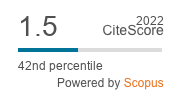Race pace strategy has been extensively studied in human sports, such as running, cycling and swimming. In contrast, pacing strategy appears to have been virtually ignored in equestrian sport despite the potential for contributing to performance optimisation. The aim of the present study was to analyse data available in the public domain for electronically-timed FEI 120 km (single day) CEI** endurance races that took place in Europe and the Middle East in 2016 and 2017. Competition records for 389 horses in 24 races, each consisting of 4 phases (loops/laps), were evaluated; 56% (n=219) of horses successfully completed the races analysed, with the remaining 44% (n=170) not finishing. The majority of horses that did not finish were withdrawn for gait related reasons (n=125; 74%). Across the duration of the races, horses that successfully finished recorded 7% slower average speeds (P=0.0001) compared to those that did not finish. Loop (lap) speed decreased sequentially throughout races from loop 1 > loop 2 > loop 3 for both the horses that completed and those that failed to complete, but the rate of decrease was greater in horses that did not complete. Horses withdrawn at the first veterinary check for ‘gait’ recorded a 36% faster average speed than those withdrawn at the finish (P=0.0001). Horses withdrawn for ‘metabolic’ reasons at the finish recorded a significant increase in loop speed from loop 3 to the final loop (P=0.02), with their speed increasing by an average of 7% on the final loop. Horses that failed to finish races completed loop 1 at a faster speed than those horses that finished and subsequently had a greater reduction in speed across the remaining loops. In contrast, horses that finished successfully had a slower loop 1 speed and completed subsequent loops at a higher percentage of their loop 1 speed. Consideration of race pace strategy in equine endurance racing may be a tool to reduce gait and metabolic eliminations and increase the chance of completion.
RESEARCH ARTICLE
Equine endurance race pacing strategy differs between finishers and non-finishers in 120 km single-day races
D. Marlin Related information
1David Marlin Consulting, P.O. Box 187, Cambridge, United Kingdom
*Corresponding author: dm@davidmarlin.
, J. Williams Related information*Corresponding author: dm@davidmarlin.
2Centre for Performance in Equestrian Sports, UWE Hartpury, Gloucester, GL19 3BE Gloucestershire, United Kingdom
Comparative Exercise Physiology: 14
(1)- Pages: 11 - 18
Published Online: January 30, 2018
Abstract
Keywords: competition, equestrian, completion, failure
2023 Journal Impact Factor
0.9
source: Journal Impact Factor 2023™ from Clarivate™

Institutional Offers
For institutional orders, please contact [email protected].
Purchase Options
-
-
-
A. Byström, H.M. Clayton, E. Hernlund, M. Rhodin and A. Egenvall
-
L. Wright, E. Hernlund, C.T. Fjordbakk, B. Ytrehus, E. Law, M. Uhlhorn and M. Rhodin
-
Jane Williams and David Marlin
-
P.S. Rejeki, A. Pranoto, R.E. Prasetya and S. Sugiharto
-
A. Byström, H.M. Clayton, E. Hernlund, M. Rhodin and A. Egenvall
-
A. Andarianto, P.S. Rejeki, , A. Pranoto, T.W. Aga Seputra, and M. Miftahussurur
-
E.J. Hall and A.J. Carter
-
L. St. George, S.H. Roy, J. Richards, J. Sinclair and S.J. Hobbs



